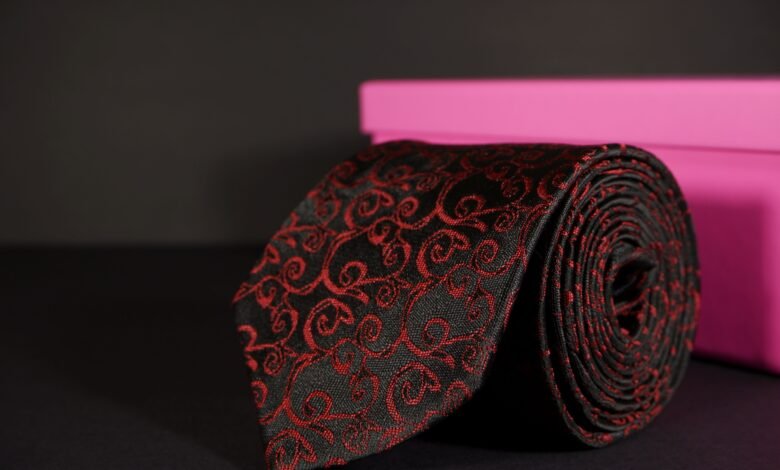Are Paisley Ties in Fashion?

Paisley first gained popularity in Europe through the efforts of Napoleon’s officers who brought back wool shawls made in Kashmir as souvenirs from India. Its shape recalls both palm tree buds and lotuses–an auspicious sign in both Babylonia and Hinduism–with fertility qualities.
If you want to avoid looking like a Vegas nightclub promoter, try pairing your paisley tie with solid colors for maximum impact. Also try choosing smaller-scale patterns as these can be easier to coordinate.
They’re a classic
Paisley is a classic pattern seen often in fashion and textiles. It can be found in bold prints or colors and pairs well with stripes or checks; for a more subdued approach choose patterns with small or muted colours – too many patterns may overwhelm an ensemble! Paisley patterns also look fantastic with solid-color shirts or jackets such as navy blue.
Original Paisley designs were hand-printed or embroidered onto fabrics such as silk and velvet fabric, often in teardrop-shaped paisley patterns that resemble teardrop shapes; others speculate the pattern was inspired by either cypress leaves or lotus flowers. Nowadays, this decorative motif can often be found adorning men’s apparel from ties, jackets and even pants!
If you plan to wear a paisley tie, make sure it does not have too many vibrant or intricate patterns. Also ensure it complements the colors in your outfit and paisley fabric colors; these ties can be worn with anything from suits and formal cotton/linen shirts to casual cotton/linen shirts; making this style versatile enough for every event!
The paisley pattern has become one of the most renowned designs throughout history. From ancient silk routes in Asia to 19th Century cowboy bandanas and hippy clothing during its infancy era; and finally becoming an emblematic symbol for rock ‘n’ roll style today; its history and style continue to draw the fashion industry inexorably together.
They’re a statement
Paisley patterns look stunning on casual fabrics ranging from cotton or linen ties to boho jersey tops, while smaller paisley designs look especially striking on more sophisticated wool, silk or synthetic materials like polyester. Paisley remains a timeless classic; iconic figures from The Beatles to David Bowie have worn it, and its popularity among men of all ages remains undiminished today.
Add some flair to your wardrobe by pairing your paisley tie with a shirt or jacket that features stripes or checks – this will help your patterns pop while looking less cluttered! Be careful, though; too many stripes or checks can become overwhelming; when matching patterns proportion is key: larger spaced prints work best with narrowly striped or micro checked shirts while smaller patterns work better when worn against finely striped or micro checked ones.
If you want to make an impression at a formal presentation or business event, pair a paisley tie with a solid navy blue, burgundy or olive green suit in order to let its pattern stand out without overshadowing your presentation or meeting. Brightly-colored paisley ties should be avoided for formal settings as these can often overpower an outfit and make too strong of an impression.
They’re versatile
Paisley patterns have long been an iconic element of fashion and textile design. Originating in Kashmiri shawls, its use has now spread to silk shirts, knitwear, Persian rugs and garden landscaping projects – even men’s clothing! Though typically found on neckties and pocket squares; bolder men may choose to incorporate this pattern into shirts and suit jackets too.
Try monochromatic paisley ties made up of shades of one colour for a more subdued take on this traditional pattern. They complement darker suits and semi-formal attire beautifully.
If you want to make an impressionful statement, geometric prints in bold contrasting colours could be the answer. This eye-catching trend works great in more casual business settings or for adding a modern edge to wool or tweed suits.
Finally, striped ties have seen an upswing this year as well. Textured fabrics add depth and interest to this timeless diagonal pattern while providing an accessible aesthetic for any outfit. From silk ribbed tie styles to knitted wool models, striped ties offer sophisticated but approachable aesthetic.
Earthy tones have also become more trendy recently, reflecting an emphasis on sustainability and minimalism in fashion. Shades like green ties and beige ties can add warmth without overshadowing other parts of an ensemble.
They’re a wedding look
Paisley has become one of the most iconic patterns to adorn fashion, textiles and home furnishings since its introduction. From finely woven silk embossed with gold and silver threads to printed twill, Persian rugs and garden landscaping; in menswear it can be found on ties, pocket squares or shirting; for the more daring it can even be mixed into suit jacket linings as well as luxury accessories like cufflinks and neckties!
Paisley patterns have quickly become a must-have in wedding fashion. Paisley patterns represent both romance and enchantment, resembling young date palm shoots or the lotus from India/Hindu culture. They were first introduced into European fashion via Kashmir shawls gifted as gifts to European officers before later adopted into Empress Josephine’s wardrobe.
Paisley patterns first gained widespread recognition during the 1960s due to their use on Beatles costumes and psychedelic-influenced clothing, before enjoying a brief comeback during the 1990s with rock stars such as Liam Gallagher from Oasis being noted for their affinity for paisley patterns. Paisley prints continue to feature prominently in high-end designer collections like those by Dolce & Gabbana and Raf Simons, so if you are searching for a tie or pocket square with this pattern, look for ones with more muted hues. An excessively vibrant pattern may become too loud and take over your outfit. Also, try not to pair two distinct kinds of patterns together as this could compete for attention and cause the paisley pattern to get lost among them.



